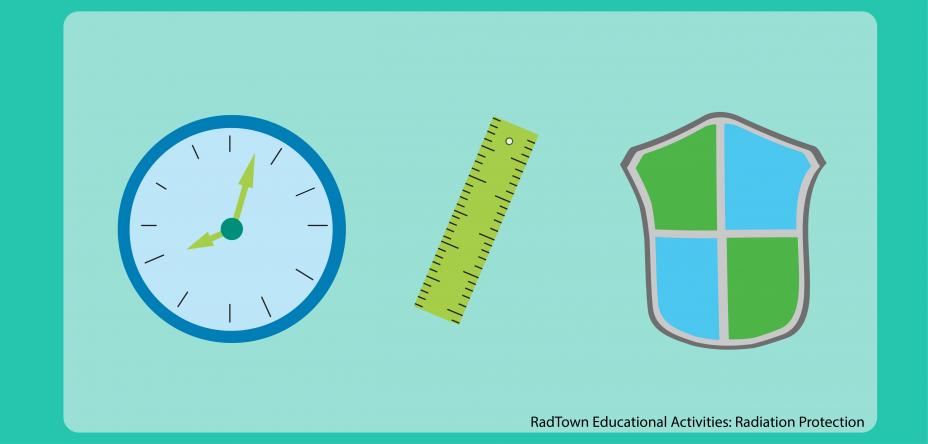Many different professions use radiation in their daily jobs. Doctors use radiation to treat and diagnose patients. Environmental scientists detect radiation using different tools and devices. Nuclear power plant workers use radiation to create power. Learn more about different careers that use radiation in this activity. This activity is intended for middle and high school students.
- Objectives
- Next Generation Science Standards
- Materials and Resources
- Time
- Directions
- Common Core State Standards
- Printable Worksheets and Classroom Aids
Objectives
Students will:
- Research and compare career opportunities in the field of radiation protection.
Next Generation Science Standards
The concepts in this activity can be used to support the following science standards:
- PS4. Waves and Electromagnetic Radiation
Materials and Resources
Each italicized document title can be found at the bottom of this page, and is available for printing and distribution.
- Radiation Protection: Teacher Background Information
- Vocabulary Materials
- RadTown Careers in Radiation Protection fact sheet
- Computer and/or projector for displaying images
- What Do They Do? images (display or share a print version)
- Student computers with Internet access and a printer (if conducting all research in class)
- Paper and/or poster board and colored pencils, pens or markers (optional)
Time
You may choose to have students complete the entire activity within one or two (45-60 minutes) class periods. If time or computer access is limited, the activity can be introduced, completed outside of the class and concluded in another class period.
Vocabulary
- Ionizing radiation
- Radiation
- Radiation protection
Directions
- Start with a vocabulary activity if students are not familiar with radiation and the terms used in this activity, or provide students with the terms and definitions.
- Explain that when we think about ionizing radiation we often think about medical workers, nuclear power plant workers and others who use radiation in their jobs. Rarely do we think about the people working to keep us and our environment safe.
- Display or provide students with the What Do They Do? images. Ask students to explain or hypothesize what each person is doing and what they have in common. Answers include:
- An inspector tests an x-ray machine (top, left).
- A scientist examines the effects of radiation on human cells (top, right).
- An Environmental Protection Agency (EPA) employee uses an air monitor to monitor and measure radiation in the air (bottom, left).
- An EPA emergency responder monitors ground radiation levels (bottom, right).
- They all have jobs focusing on radiation protection.
- Direct students to identify and research radiation protection careers. They may interview a person in the field or conduct online research. Career options might include any of the following:
- Health physics provides the practical means for protecting workers, the general public and the environment from harmful radiation exposures.
- Radiobiology is a specialized branch of biology that studies the effects of ionizing radiation on cells and organisms.
- Radiochemistry is the branch of chemistry that uses analytical techniques along with sophisticated radiation measurement techniques to determine the presence of, or in many cases to quantify the activity of, individual radioactive elements at extremely low levels.
- Radioecology determines how radioactive material is transported through the physical environment (e.g. ground, water and air) and through ecosystems (e.g., through bioaccumulation).
- Have students report on:
- The education, knowledge and skills required for the profession.
- The main job functions.
- The industries in which they may work (and potentially the job setting – e.g., in a laboratory, outdoors or at a desk).
- Establish formats for delivering the final product. Examples may include:
- A job description or a brochure promoting the career.
- A role play of a job interview (e.g., the “employer” may describe some of the job tasks and ask the “candidate” about his education, skills and experience).
- A career fair in which students display their products (e.g., job description, brochures, and posters) at a “booth” or provide a brief presentation and answer questions about the profession.
- Conclude by asking students what they have learned about careers in radiation protection. Students can submit their conclusions in writing if preferred.
Common Core State Standards (CCSS)
The concepts in the A Career in Radiation Protection activity align with the following:
CSS English Language Arts Standards for Literacy in History/Social Studies, Science, & Technical Subjects
- CCSS.ELA-LITERACY.SL.6-12.1 Comprehension and Collaboration
- CCSS.ELA-LITERACY.RST.6-12.2 Key Ideas and Details
- CCSS.ELA-LITERACY.WHST.6-12.7 Research to Build and Present Knowledge
- CCSS.ELA-LITERACY.WHST.6-12.8 Research to Build and Present Knowledge
- CCSS.ELA-LITERACY.WHST.6-12.9 Research to Build and Present Knowledge
- CCSS.ELA-LITERACY.WHST.6-12.4 Production and Distribution of Writing
- CCSS.ELA-LITERACY.WHST.6-8.6 Production and Distribution of Writing
Printable Worksheets and Classroom Aids
You may need a PDF reader to view some of the files on this page. See EPA’s About PDF page to learn more.- What Do They Do? (PDF)(1 pg, 261 K)

